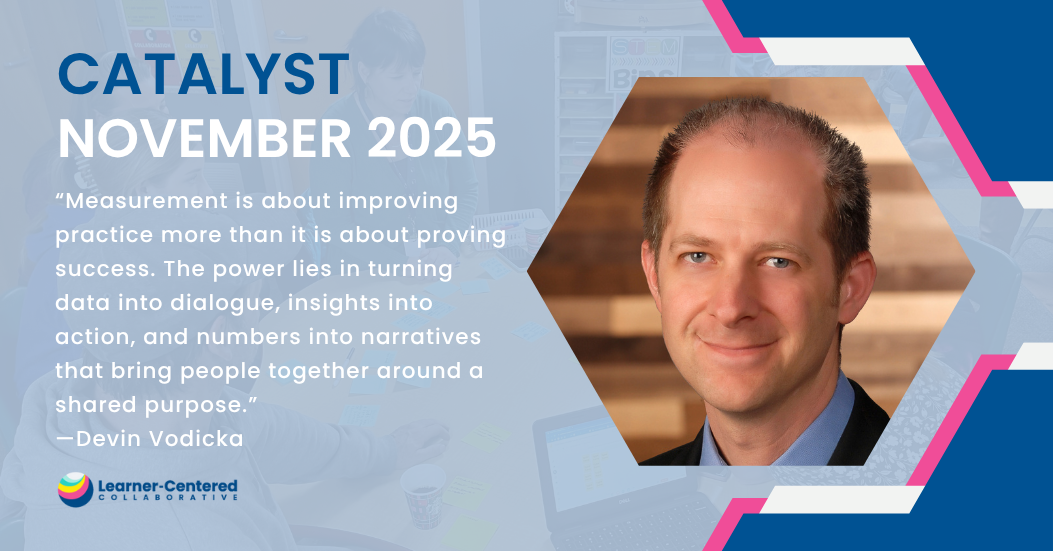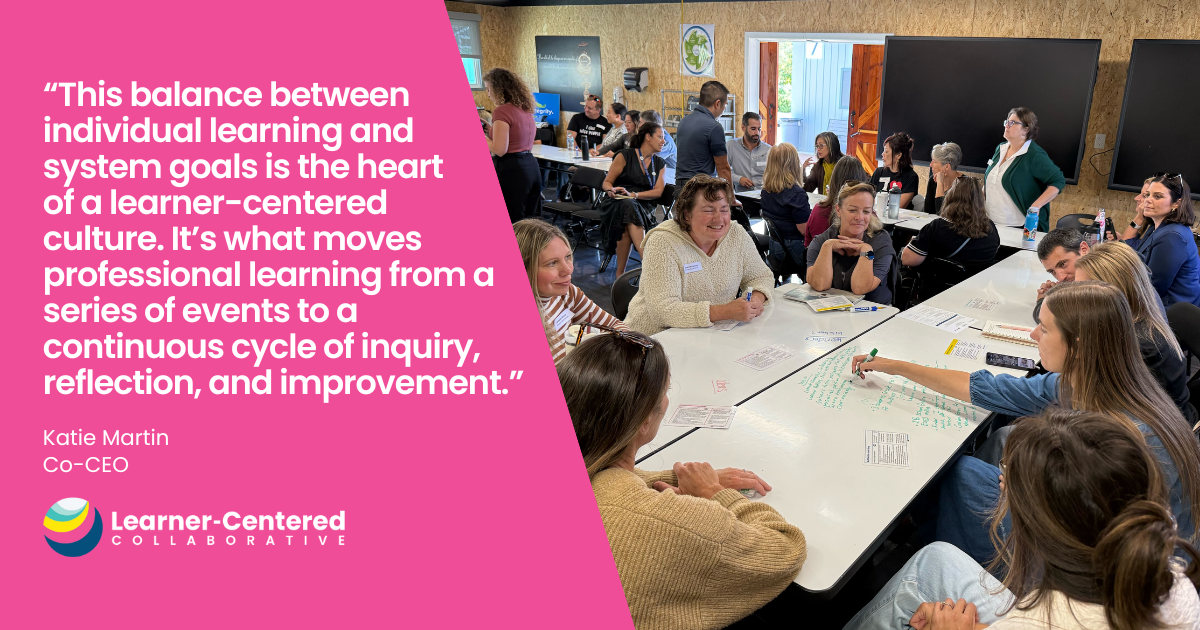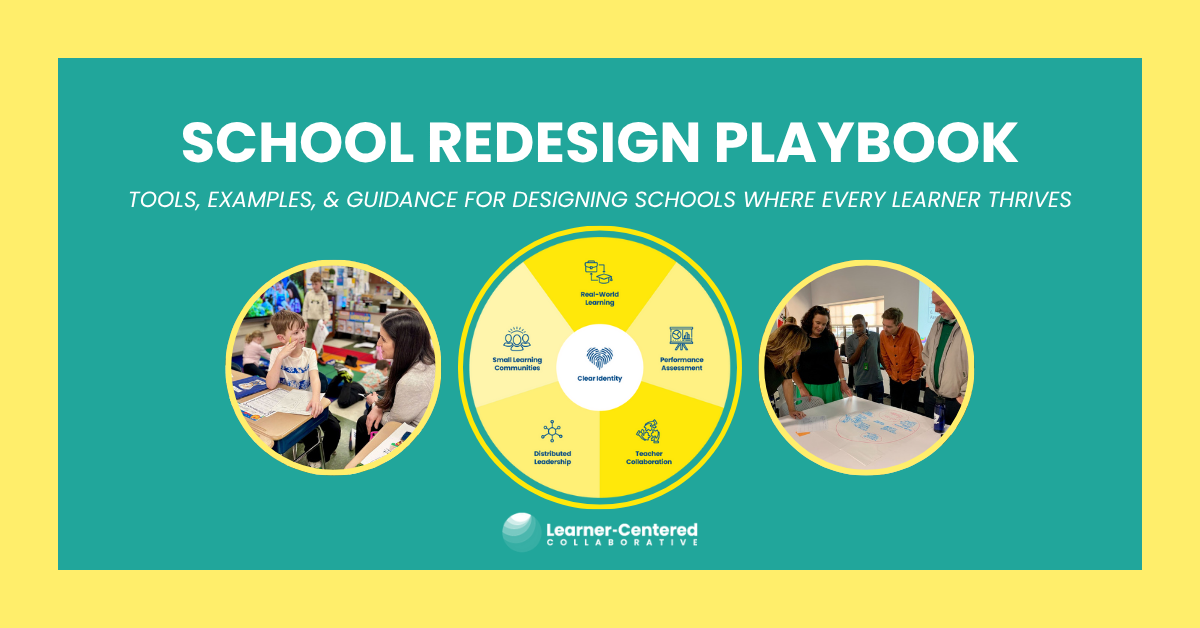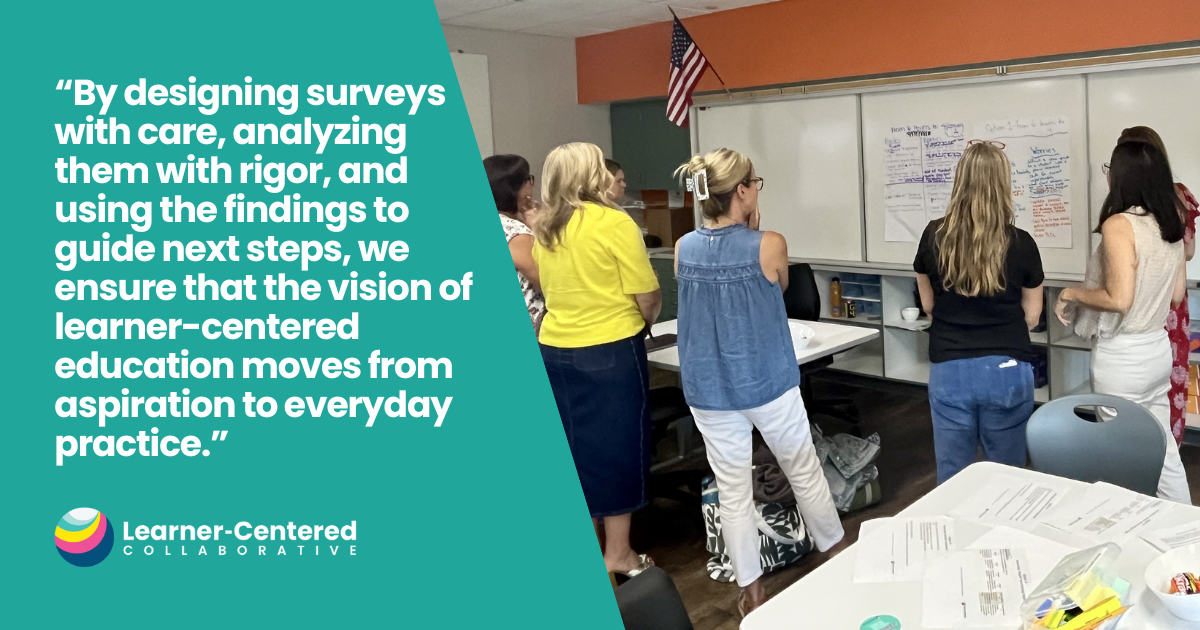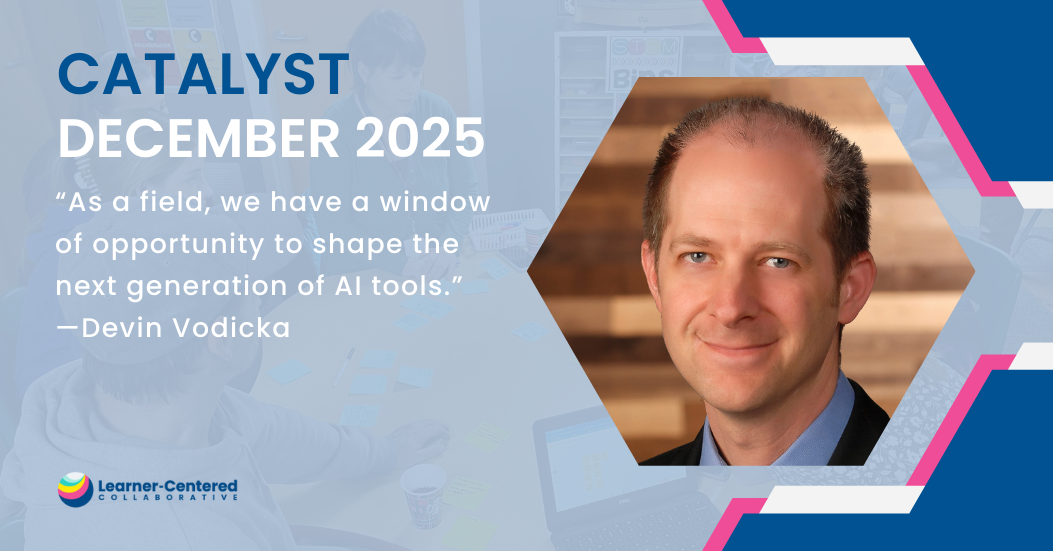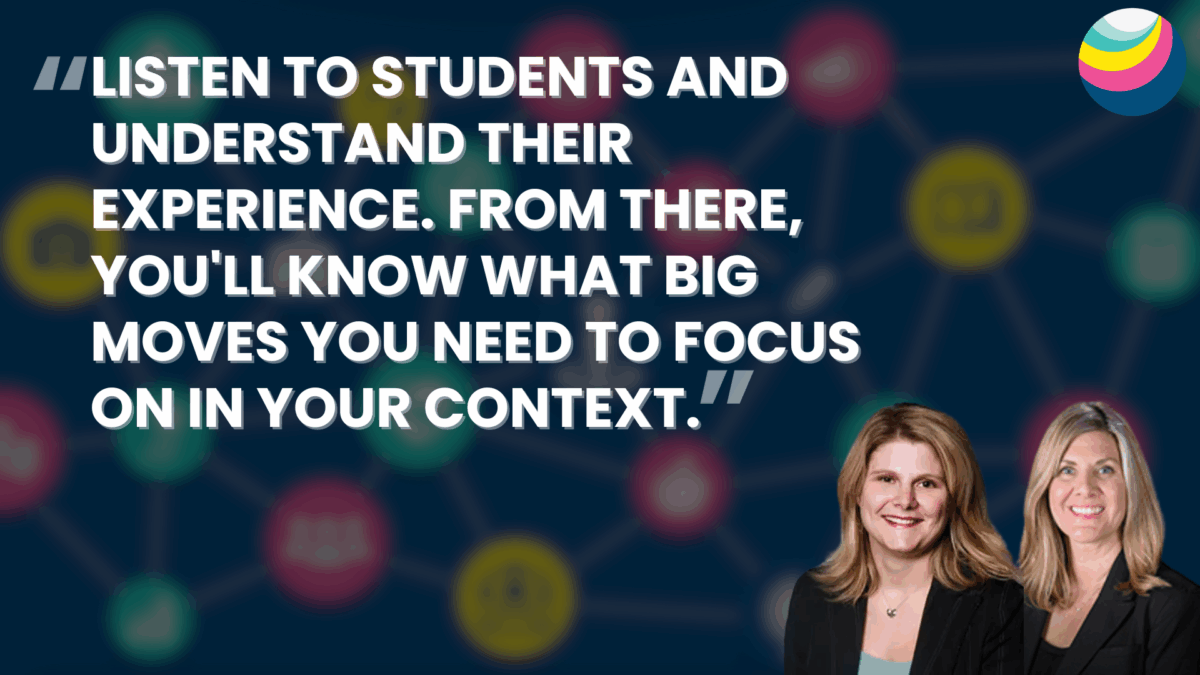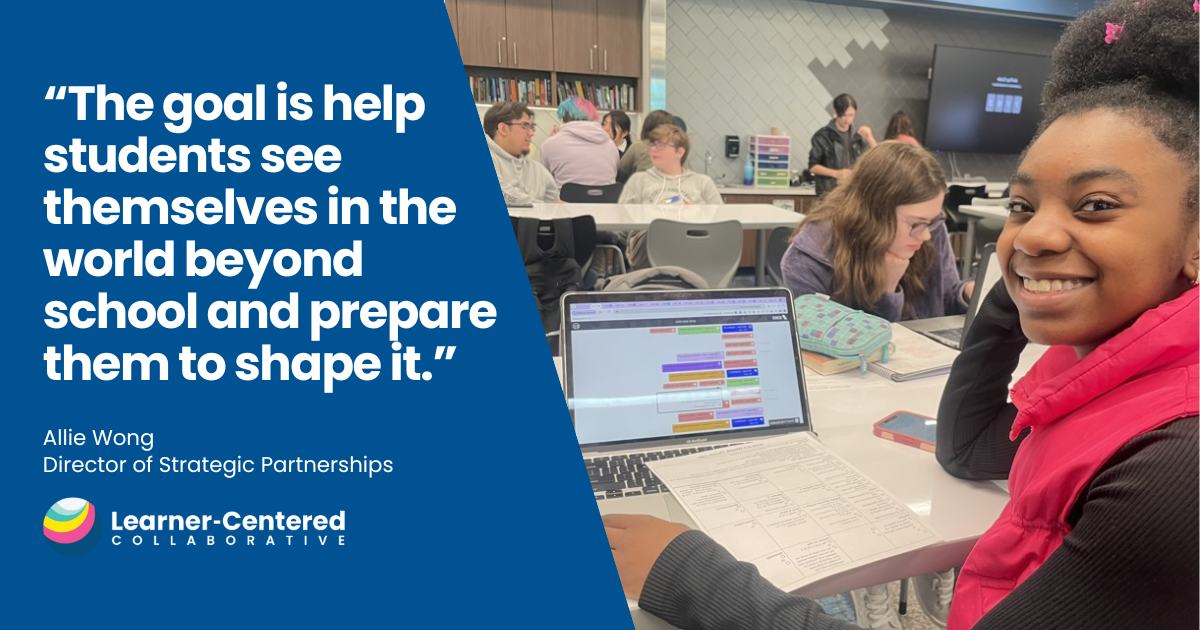The Power of Why: How Assessment Philosophies Drive Calibration for Meaningful Change
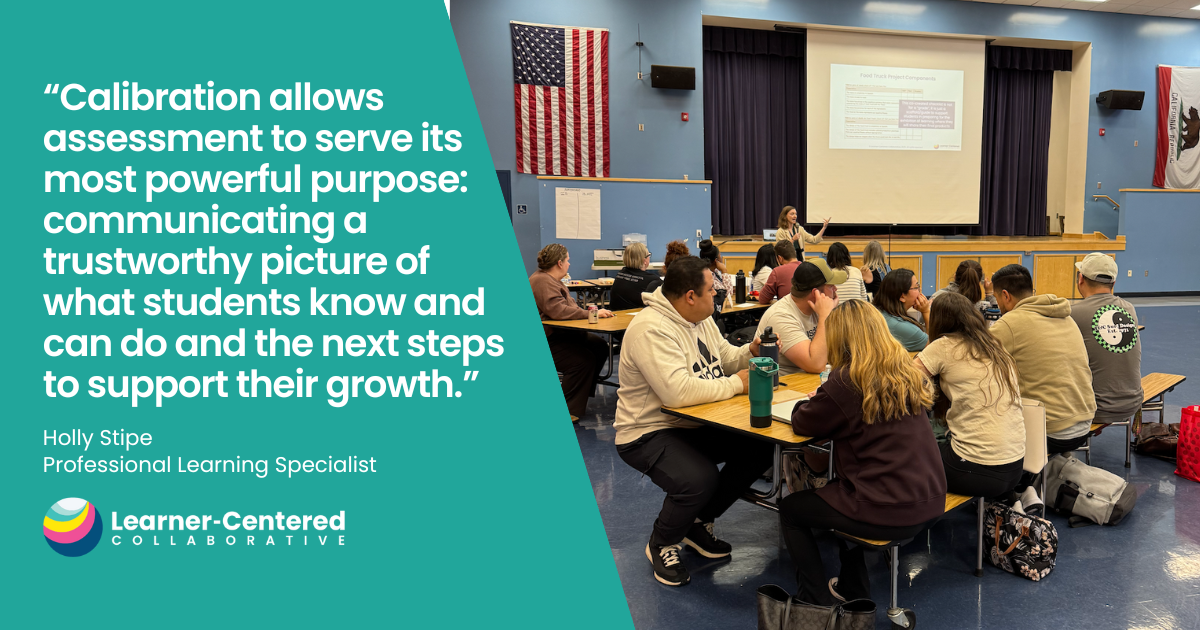 “This feels overwhelming.”
“This feels overwhelming.”
“We are moving towards something tangible and realistic.”
“This is amazing – we got this.”
These reflections, shared by educators, capture the spectrum of emotions that surface when rethinking assessment and grading practices. One names the challenge of stepping into something new, another lifts up the promise of what’s possible, and the third grounds the work in a sense of collective progress. Together, they remind us that transformation is not linear, but made up of actionable steps towards clarity and confidence.
Calibration is the practice of educators coming together to align their understanding of what proficiency looks like and how it is assessed, reported, and communicated. It’s the process of moving beyond individual interpretations of standards or rubrics towards a shared, collective picture of learning. At its heart, calibration is not just about consistency in assessment; it’s about building trust, coherence, and collective efficacy across an ecosystem.
Why Calibration Matters
If you ask parents, educators, and learners what a grade means, you’ll likely hear very different answers, as evidenced by recent research. Parents often see grades as a signal of academic standing. Teachers tend to view them as tools to guide student improvement. Learners, meanwhile, may interpret them transactionally: points to be collected on the path to graduation and college admission. Without a shared understanding, the messages we intend to send through grades can easily become misaligned.
But this challenge is also an opportunity. When stakeholders come together to calibrate by clarifying the purpose of assessment, aligning on what proficiency looks like, and using consistent practices, we replace confusion with clarity. Calibration allows assessment to serve its most powerful purpose: communicating a trustworthy picture of what students know and can do and the next steps to support their growth.
It’s common for schools to dive quickly into designing rubrics, debating grading scales, or redesigning report cards. However, starting with the “what” and “how” without first grounding in the “why” can lead to confusion and misalignment.
Dr. Thomas Guskey writes in Get Set, Go! Creating Successful Grading and Reporting Systems, lasting grading shifts “…address important why issues related to changes; it should describe the intended goals and why they are important.” A strong assessment philosophy – a clear and co-created North Star – can change everything.
Defining our North Star at Wiseburn USD: How Assessment Philosophies Determine Actions
At Wiseburn Unified School District in Southern California, a group of educators and leaders representing each school and grade level formed an assessment design team to define an assessment philosophy for K-8 that would inform assessment, grading, and reporting policy decisions for the district.

Educators at Wiseburn Unified School District came together to define assessment purposes as they shift to a competency-based reporting system.
The team began by gathering input from educators and students to draft their collective “why” statements. This empathy work surfaced not only frustrations with traditional grading, but hopes for a system that could better honor learner growth and ownership.

This shared assessment philosophy, written by the Wiseburn design team, guides decisions, creates clarity, and ensures assessment serves learning and communicates growth.
This work is slow by design. Taking time to engage a variety of voices and align on purpose resists the urge to rush into technical fixes. Co-creating the philosophy helps ensure buy-in and lasting change. Once the philosophy is clear, decisions about essential standards, proficiency scales, and reporting practices flow with greater coherence.

Educators worked together to brainstorm idea banks of what Assessment IS and IS NOT to inform the creation of their assessment philosophy.
A philosophy doesn’t just live on paper. Instead, it becomes the compass guiding daily instructional choices, professional learning, and the way we communicate learner growth with families. It’s how systems ensure that their “what” and “how” always serve their deeper “why.” From there, leaders can guide teams to translate their north star – the assessment philosophy – into actionable steps such as redesigning report cards, strengthening and shifting grading practices, or creating new feedback tools.
Translating the “Why” into the “What” at The Innovative School of Temple Beth Sholom
Educators at The Innovative School of Temple Beth Sholom in South Florida seized the opportunity to strengthen assessment practices by determining essential standards and rubrics, aiming to elevate instruction and bring greater consistency across classrooms. Together, they anchored decisions on their shared assessment philosophy, rooted in their Reggio Emilia-inspired vision and Learner Portrait, ensuring that grading and reporting practices would be anchored in their shared beliefs.
They walked through a unit of study’s assessment arc through the lens of an elementary schooler in order to build empathy, surface tensions, and provide the data needed to make informed decisions about what to assess and the methods they might employ to determine and document proficiency on outcomes. Educators proactively tightened their list of essential standards and developed shared rubrics in order to better define what proficiency looks like. This gave teachers a foundation to guide instruction and assessment practices in their classrooms.
With newly developed shared rubrics in hand, teachers turned to student work, discovering where interpretations aligned and where uncertainty emerged — does this truly show ‘meeting’ or ‘practicing independently’? Through dialogue, clarity and points of agreement were revealed. The experience sharpened educators’ ability to reliably and consistently assess standards and offer meaningful, targeted feedback.
 This visual is a reminder that different perspectives are normal. Through calibration, design teams play a critical role in aligning perceptions to drive improved performance.
This visual is a reminder that different perspectives are normal. Through calibration, design teams play a critical role in aligning perceptions to drive improved performance.
For learners, calibration opens the door to greater ownership. When used as tools to illuminate what learners can do and where they can grow, rubrics become roadmaps, guiding learners in goal-setting, clear and actionable next steps, and self-reflection.
Calibrating YOUR Team on Assessment with Design Teams
Perhaps most importantly, shared practice takes root through design teams who play a critical role in facilitating change. By forming a cross-functional team with a shared goal that empowers and cultivates responsibility, design teams strengthen two-way communication by seeking input from their peers about key decisions.
They also engage in calibration protocols with one another, refining their shared understanding before bringing it back to their schools. When design teams facilitate professional learning and model these same protocols with colleagues, they help build consistency and confidence.
Design teams can field test sample rubrics and report cards with colleagues, students, and families, collecting feedback through classroom observations, student interviews, and parent panels. These feedback loops not only improve the tools but also create buy-in, as stakeholders can see that their input shapes the work.
By consistently looping input outward and insights inward, design teams create momentum. Each feedback loop becomes a chance to align, clarify, and practice consistency. And because the work is iterative, educators experience how shared meaning is built. Ownership is not concentrated in a small group. Instead, it radiates through consistent two-way communication.
Across districts, we’ve seen that when schools commit to calibration, assessment transforms into a source of truth among teachers, strengthens communication with families, and helps students shift their focus from point chasing to genuine growth. Calibration turns assessment into a promise – one that is shared, consistent, and learner-centered.
If you’re feeling the spark of possibility in your own system, you don’t have to start from scratch. We’ve developed resources such as our Competency-Based Reporting Playbook or our online self-paced Competency-Based Learning Deep Dive Course to help you get started and stay on track.
Whether you’re ready to launch a design team, refine essential standards, or pilot competency-based progressions, we’d love to walk alongside you. Explore our resources or reach out to start a conversation about how we can help you calibrate your team and create a system that truly reflects what learners know and can do.
